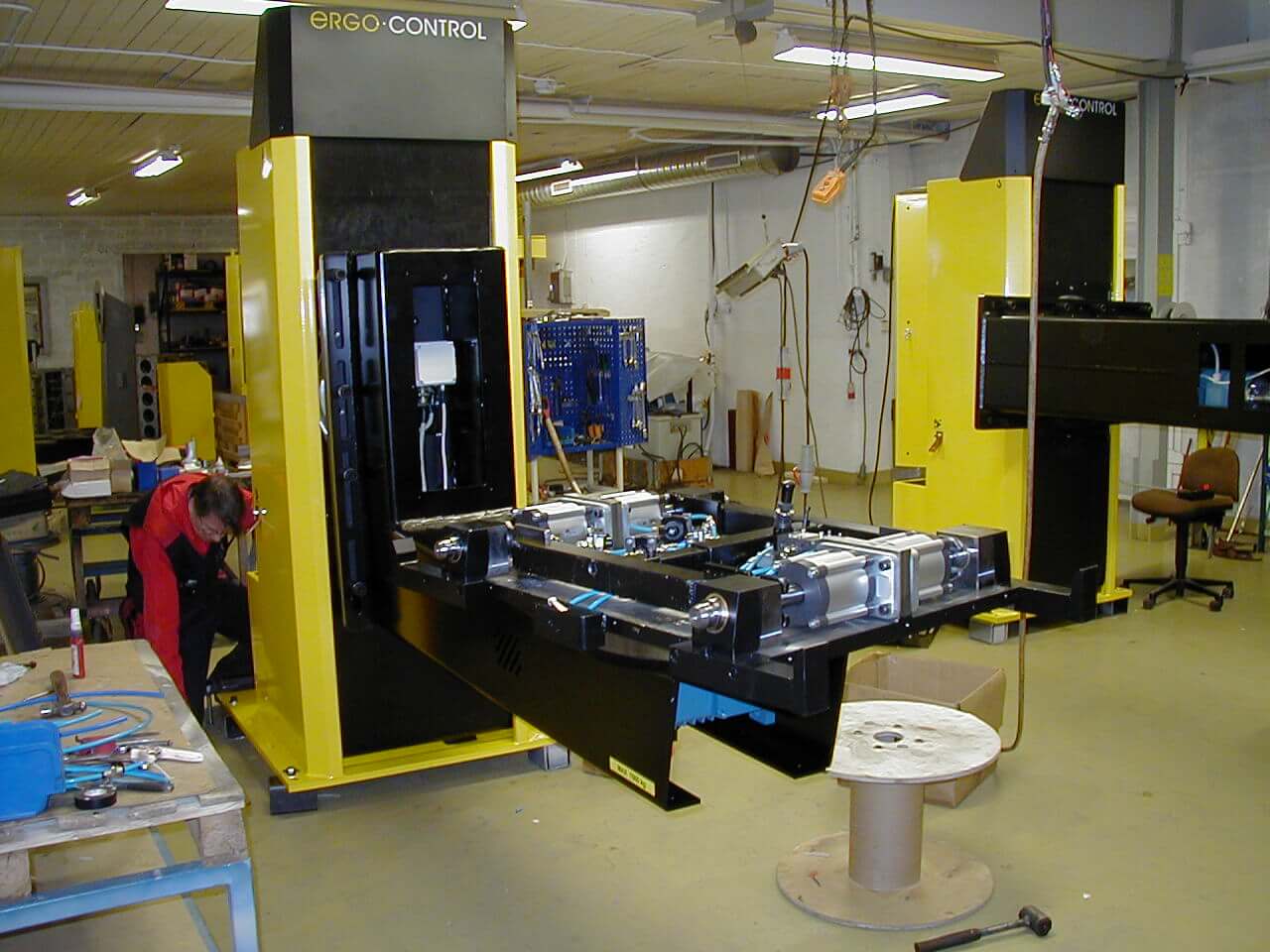Ergotronix Solutions: How To Reduce Strain, Fatigue, and Injury in the Workplace
Manufacturing leaders are constantly looking for ergonomic solutions to improve efficiency and productivity in their industrial organizations. If you’re one of many manufacturers who want to improve your bottom line, look no further than the capabilities that present themselves when your team utilizes ergonomic equipment.
Common Workplace Injuries
While falls and traumatic injuries come to mind when considering workplace hazards, other non-ergonomic injuries are typically more common. A workplace injury can be impactful, long-lasting, and truly avoidable. Examples of such injuries include the following:
- Cumulative Trauma: Injuries that can develop or worsen over time due to continuous straining
- Repetitive Strain: Injuries brought on by repetitive, unnatural movements
- Musculoskeletal Disorders: Injuries that affect bones, nerves, tissues, muscles, and tendons
Several disorders can fall under one or more of these categories, such as carpal tunnel and tendonitis.
Depending on the specific injury incurred, damage to the body can trigger symptoms, each of which can disrupt, slow, or even eliminate an individual’s ability to work.
- Aching or pain
- Numbness or tingling
- Swelling
- Stiffness or reduced range of motion
- Weakness
- Loss of coordination
Ergonomic Solutions that Promote Safety & Productivity
The implementation of ergonomic equipment, planning, and workplace procedures aims to reduce instances of work-related strain, fatigue, and injury in employees. By preventing workplace hazards that result in various types of injuries, a more ergonomically-focused manufacturing facility can take advantage of improved productivity, efficiency, and safety.
Because the field of ergonomics seeks to explore and examine employees, the work they do, and how that work is conducted, ergonomic solutions have to be highly customized to fit each organization’s needs in relation to:
- The unique body movements employees repeat at work
- The tools and equipment each employee uses
- The environment within the facility
- The company’s organizational standards
- The risks the above-mentioned points pose to employee safety and health
Read on to learn more about how ergonomic equipment, practices, and training improve workplace processes, enhance employee efficiency, and encourage a greater sense of care and general well-being at work.
Decreasing Strain
Strain injuries are often caused by overextending to reach for equipment, maintaining an uncomfortable position, or lifting heavy and cumbersome objects. Strains can affect most joints, but they commonly occur in the wrists, shoulders, knees, and back.
By utilizing ergonomic equipment, manufacturing businesses can reduce incidents that cause strain injuries in the following ways.
- Ergonomic equipment is designed to make components easy to reach/hold.
- Ergonomic equipment enables workers to reposition products and materials so that the employee is always able to maintain natural positioning.
- Ergonomic equipment simplifies lifting and transferring materials, and as such, employees are not forced to lift and move items manually.
Reducing Fatigue
Fatigue can be an incredibly dangerous issue to deal with in a manufacturing environment, as individuals who work while fatigued are less capable of making rational decisions than those who are alert and attentive.
In some situations, workplace fatigue can be as much of a risk as working while under the influence of drugs or alcohol, especially in circumstances where an employee is expected to operate machinery.
Fatigue slows reaction times, impairs decision-making, and can lead to employees working slower and less efficiently than what they’re ordinarily capable of doing.
Ergonomic equipment aims to reduce employee fatigue in a number of ways. For example:
- Ergonomic equipment simplifies moving, transferring, lifting, and repositioning materials. This eliminates much of the need for manual handling, which reduces how much energy employees need to expend.
- Ergonomic equipment can streamline the process of lifting or moving materials so that more work can be done in a given amount of time. While it may take 2 or 3 employees between 1 and 2 minutes to move an object manually, a piece of equipment can accomplish this task in seconds. This reduces wasted time and enables more material to be moved without exhausting employees.
- Ergonomic equipment, because of its capabilities, aims to keep employees awake and comfortable throughout the workday, which reduces the number of mistakes made, breaks needed, and downtime accrued throughout the day.
Preventing Workplace Injuries
Workplace injuries can be caused by a number of contributors, but much of the time added safety protocols can significantly reduce instances of employees getting hurt.
As mentioned above, ergonomic equipment aims to decrease strain, which can also reduce injuries. Additionally, ergonomic equipment reduces worker fatigue, which can in turn reduce the occurrence of injuries that result from fatigue-induced behaviors. Take falls, for example. By reducing the need to overreach for equipment, strain while lifting materials, and work while fatigued, workers are far less likely to suffer from trip and fall accidents.
Additionally, using ergonomic equipment prevents the likelihood of dropping materials, which can damage them or injure nearby employees. Ergonomic equipment lifts and moves heavy objects so reliably that workers no longer have to bend down, crouch, kneel, or move materials while in an uncomfortable position.
Enabling safer and easier ways to lift and move objects can greatly reduce hernias, broken bones, joint/nerve pain conditions, and much more.
Ergotronix offers an array of solutions to streamline industrial processes. Such equipment options focus on improving manufacturing procedures by, for example, involving lifting, positioning, transferring, conveying, and transporting materials.
Contact us for more information about ergonomic equipment and to learn how Ergotronix’s ergonomic solutions can benefit your manufacturing processes, visit our website or contact our team to have your questions and concerns addressed.



